Stress Analysis in Cylindrical Shell
VerifiedAdded on 2019/09/23
|10
|467
|172
Project
AI Summary
The assignment content discusses various concepts in solid mechanics, including stress at points A and B, principal stresses, and strain. It also includes a problem involving the finite element method to calculate displacement and stress. The summary is as follows: Points A and B are under internal pressure, axial tension, and hoop tension with no twisting moment. The maximum out-of-plane shear stress is lower than the yield stress, so yielding does not occur. Assuming a 1mm compression after applying a vertical force, the strain in the vertical direction is calculated. The finite element method is used to calculate displacement and stress for a given problem.
Contribute Materials
Your contribution can guide someone’s learning journey. Share your
documents today.
1 out of 10
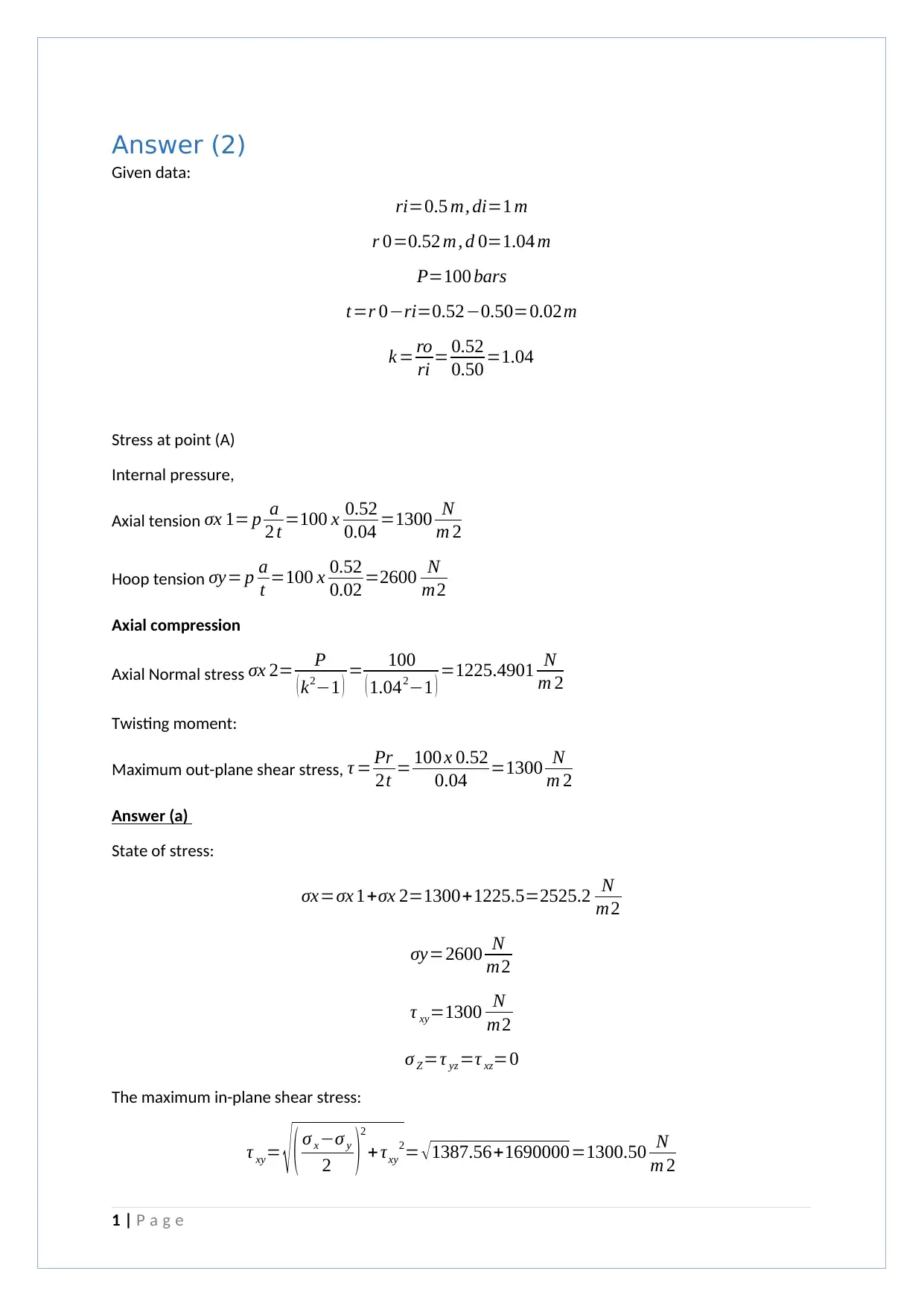
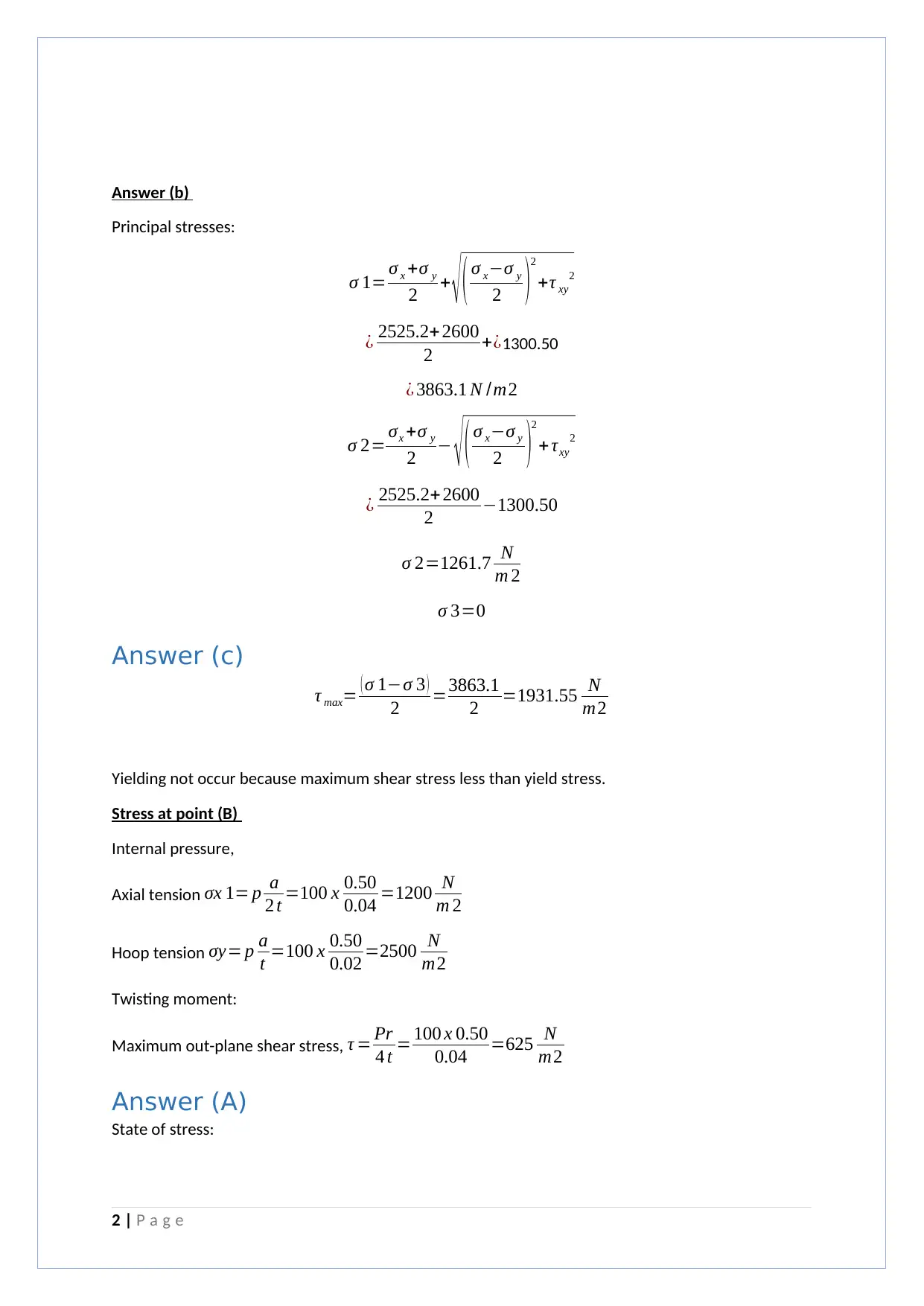
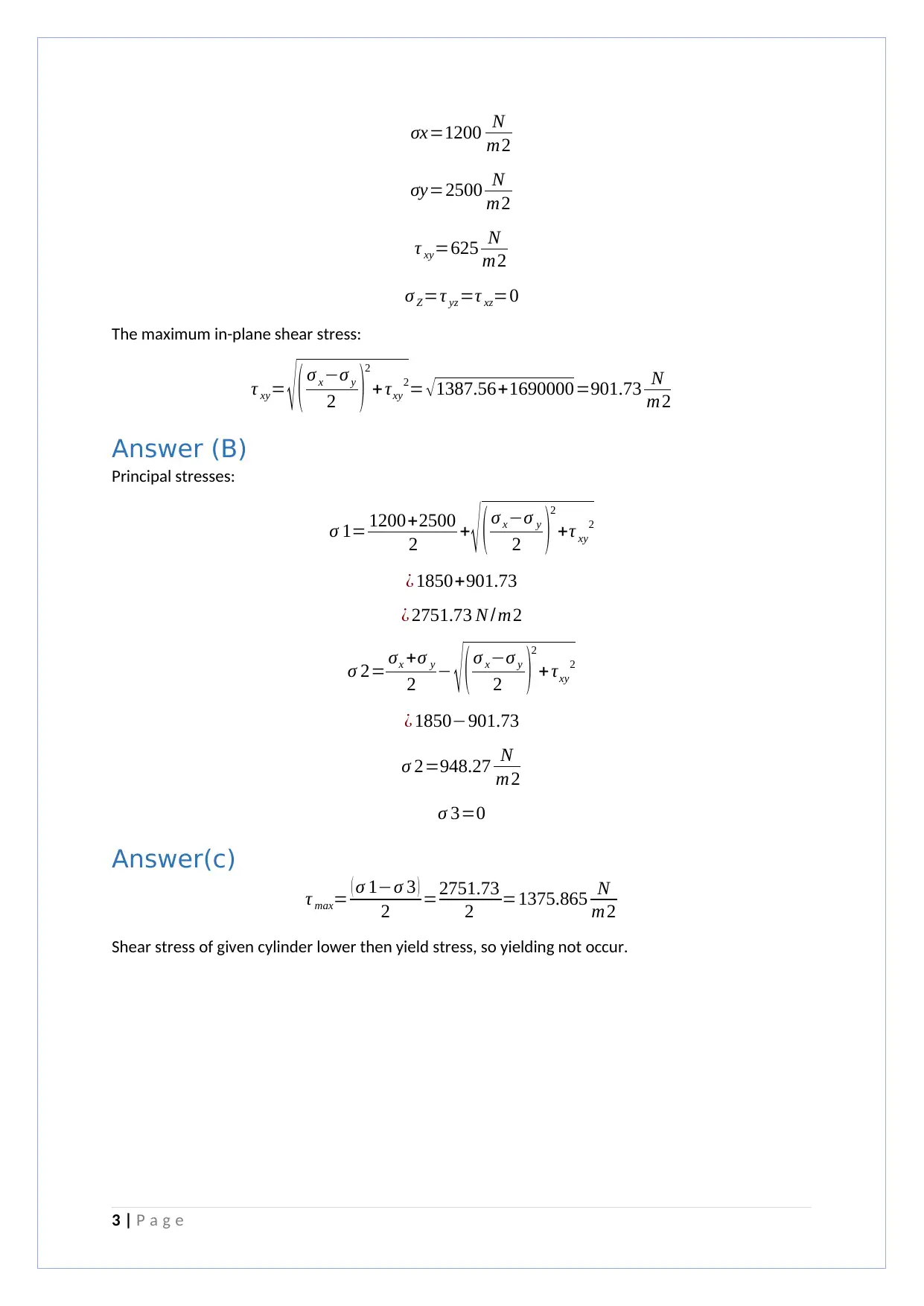
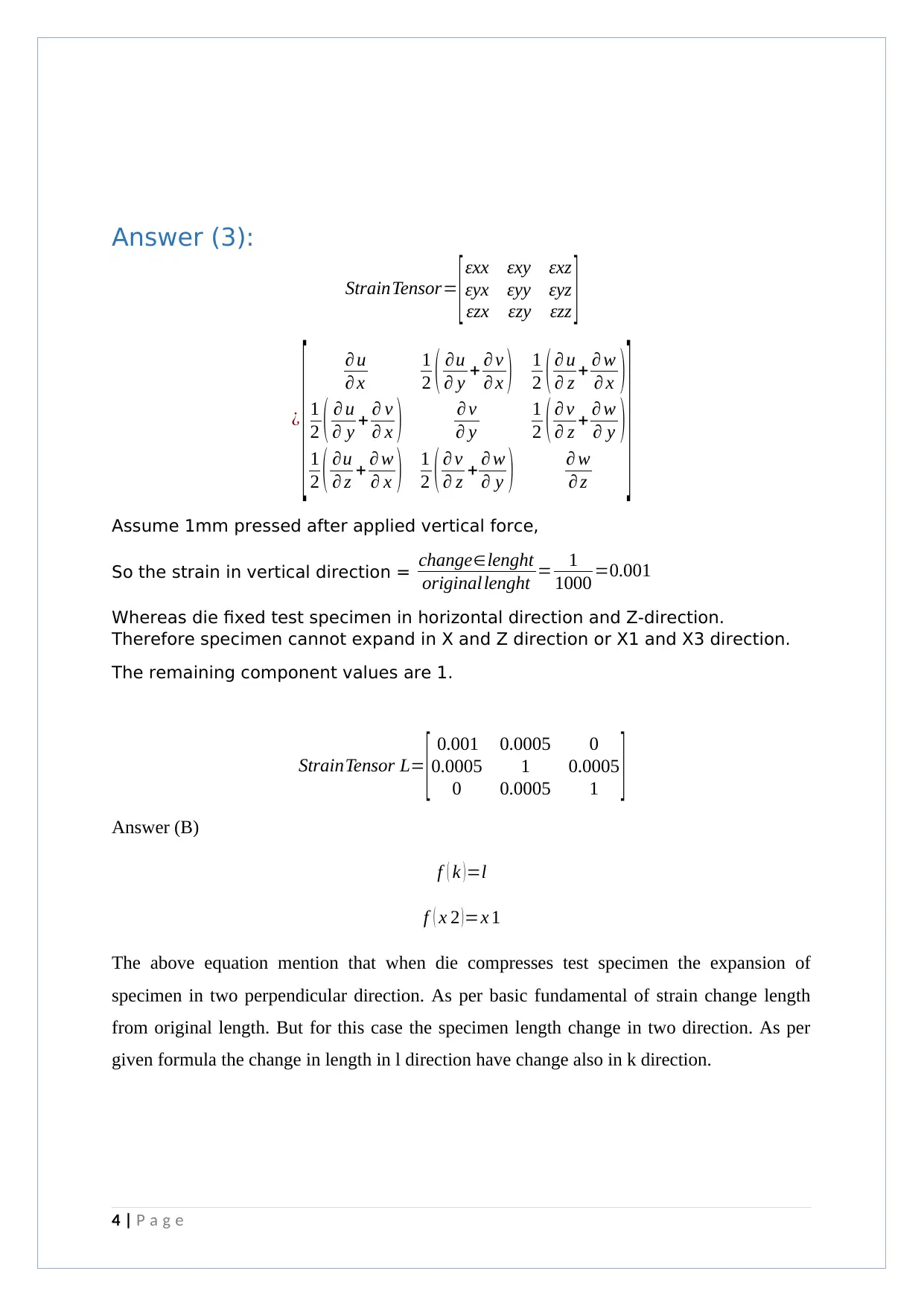
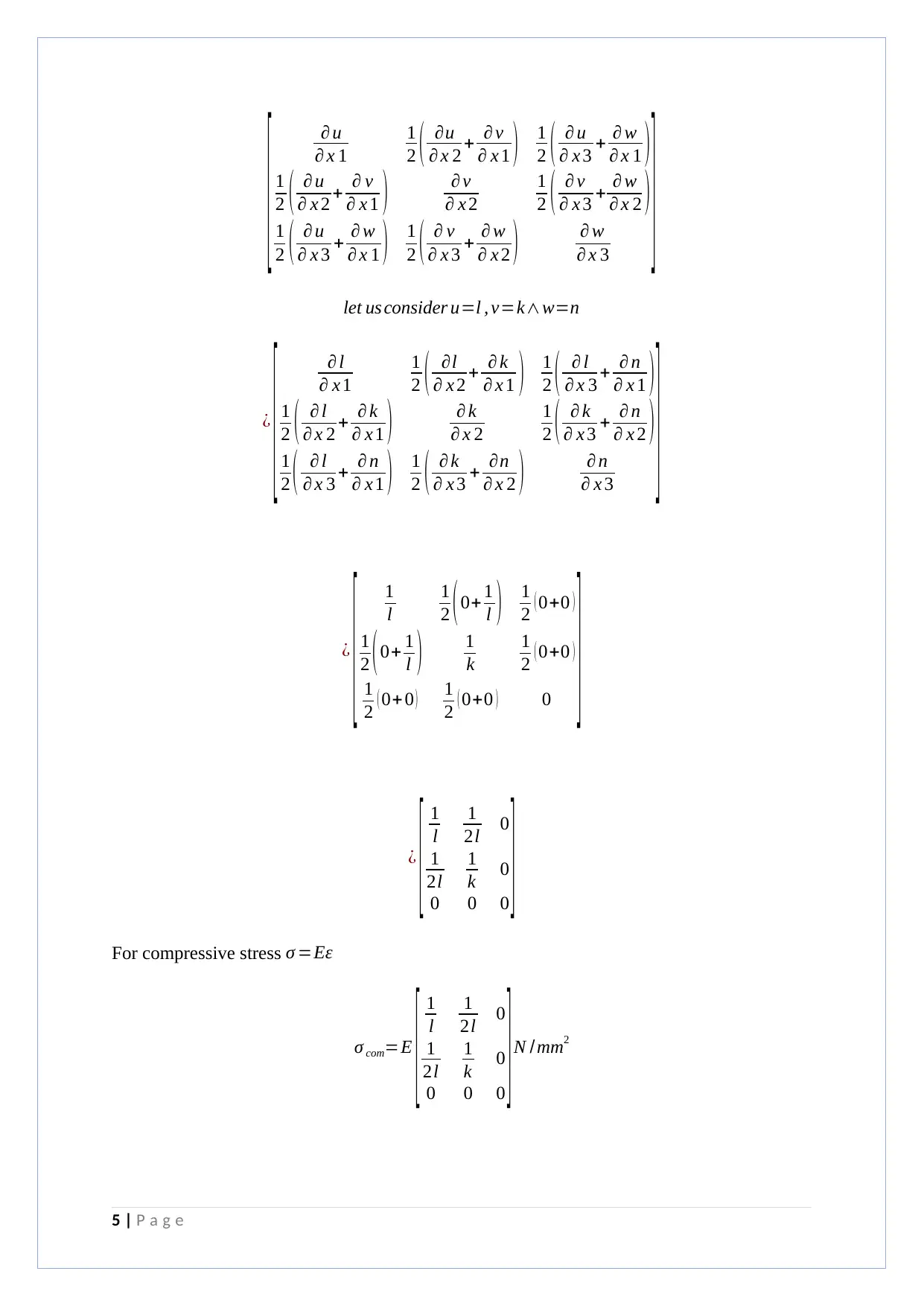
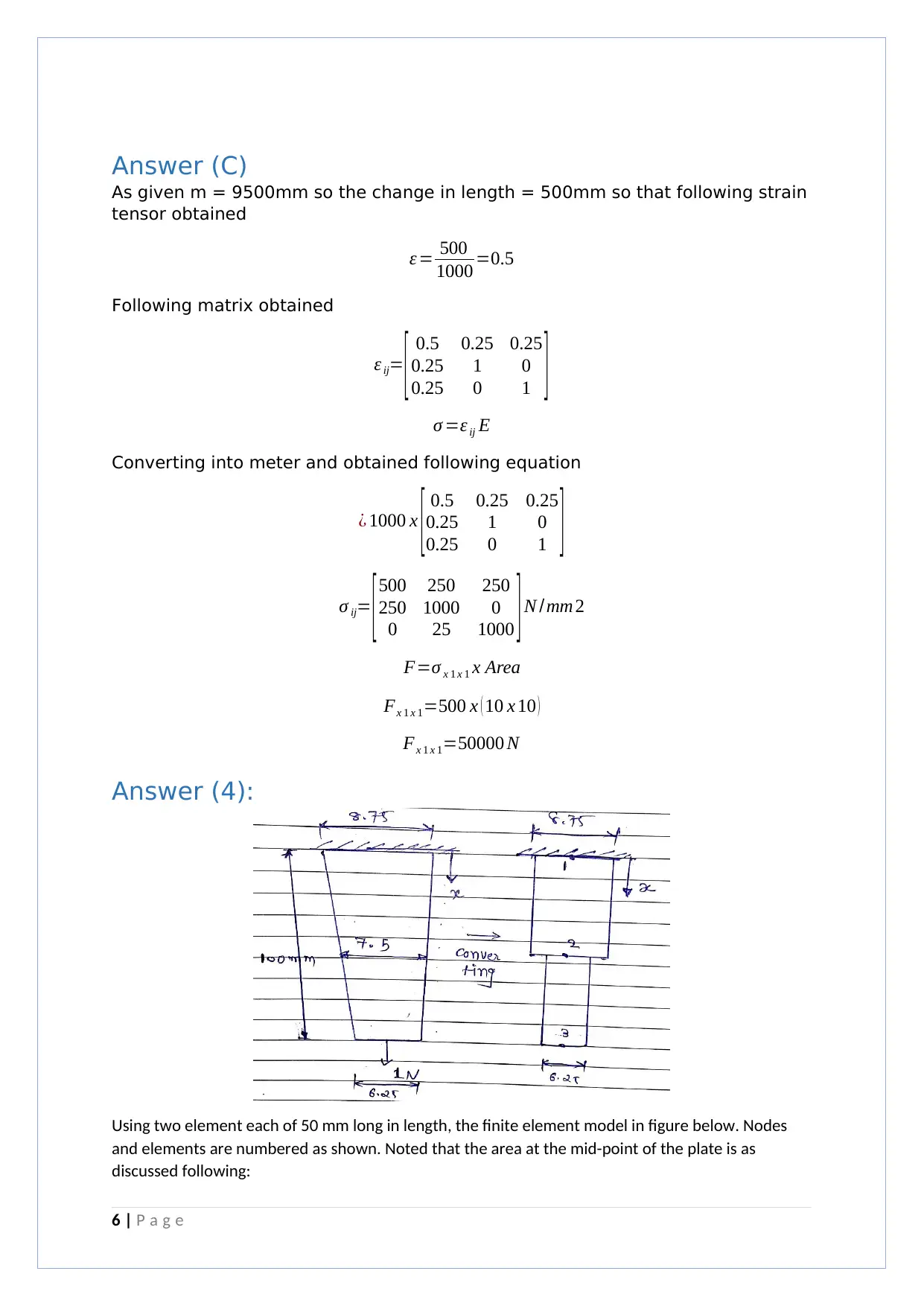
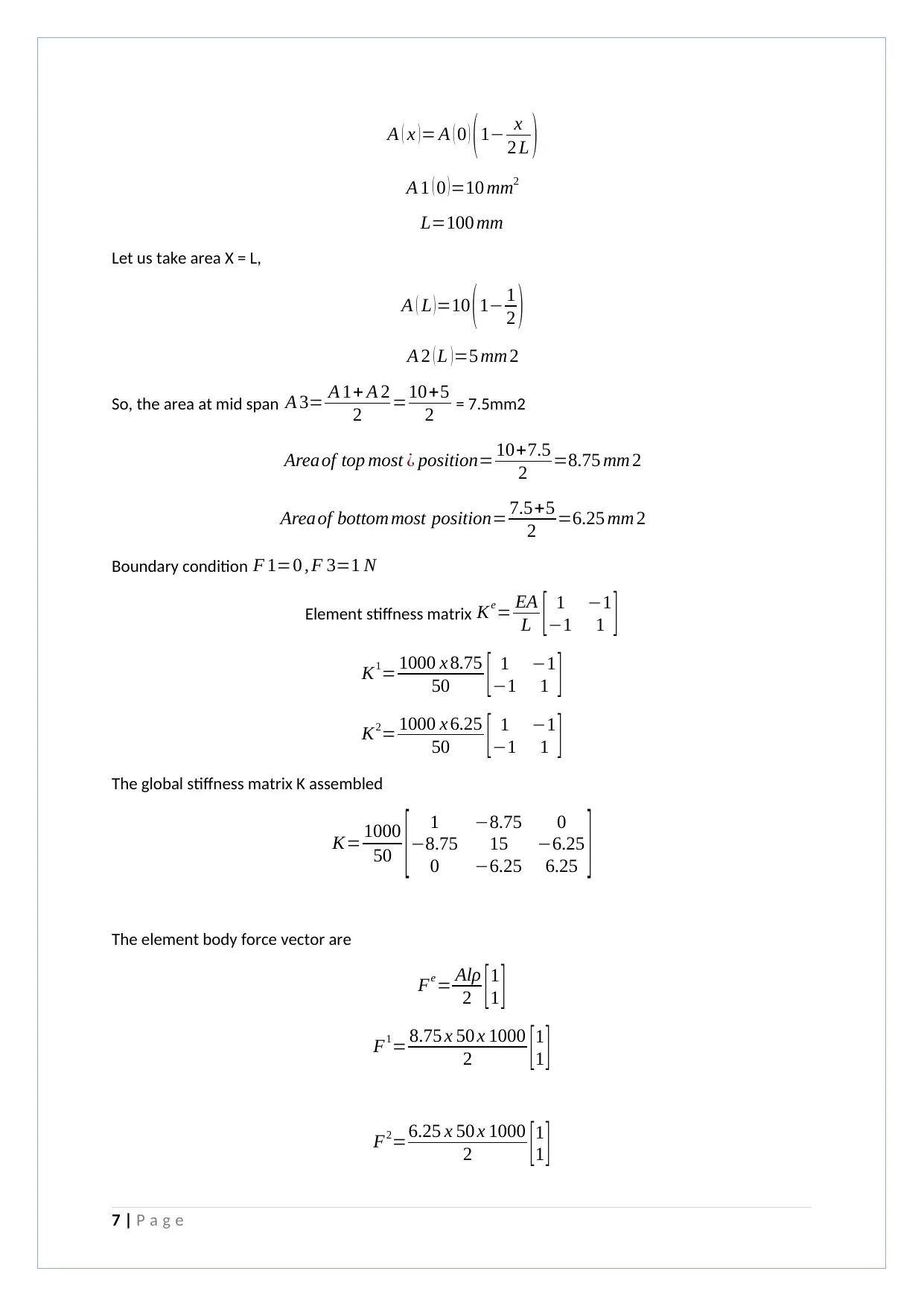
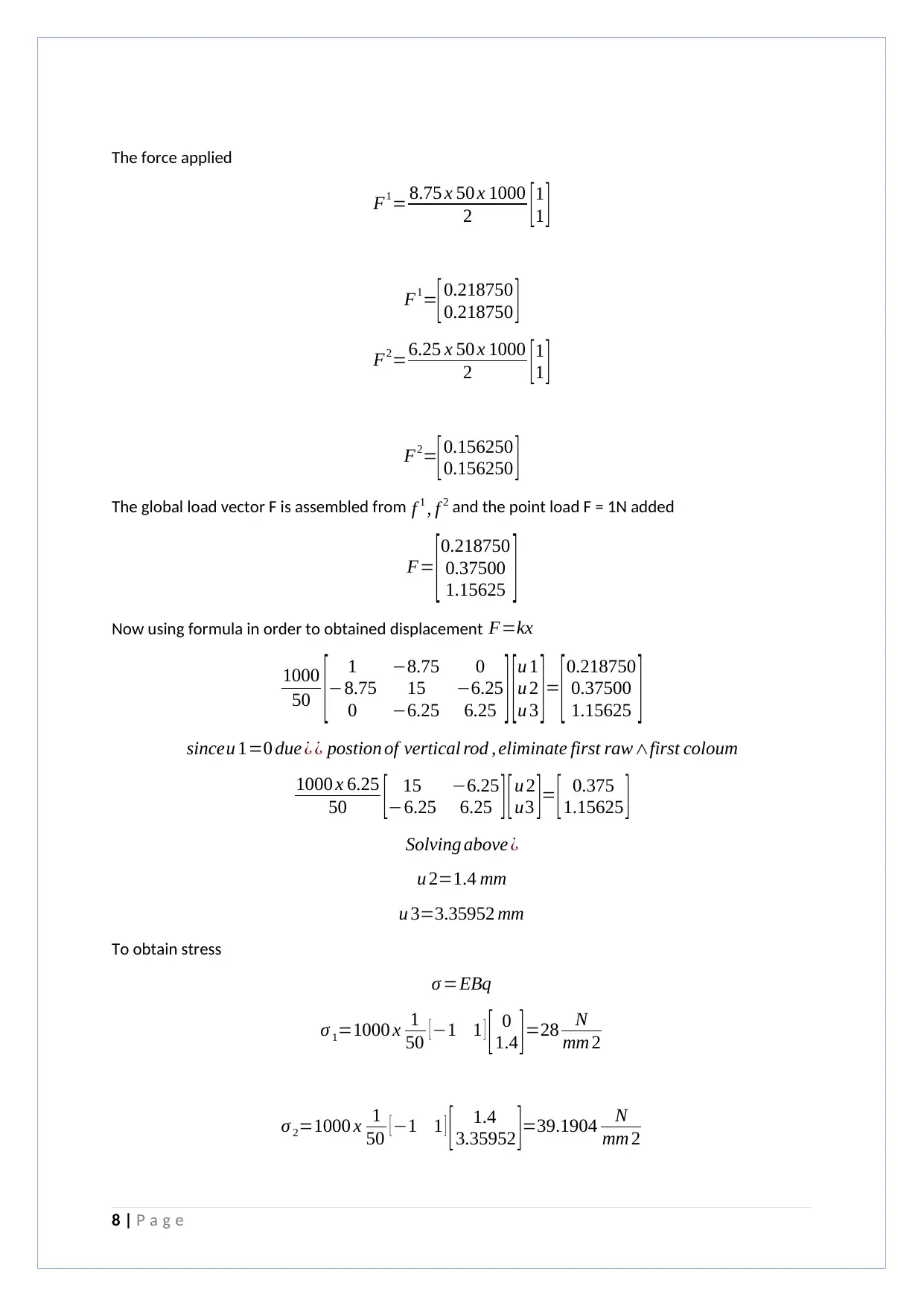
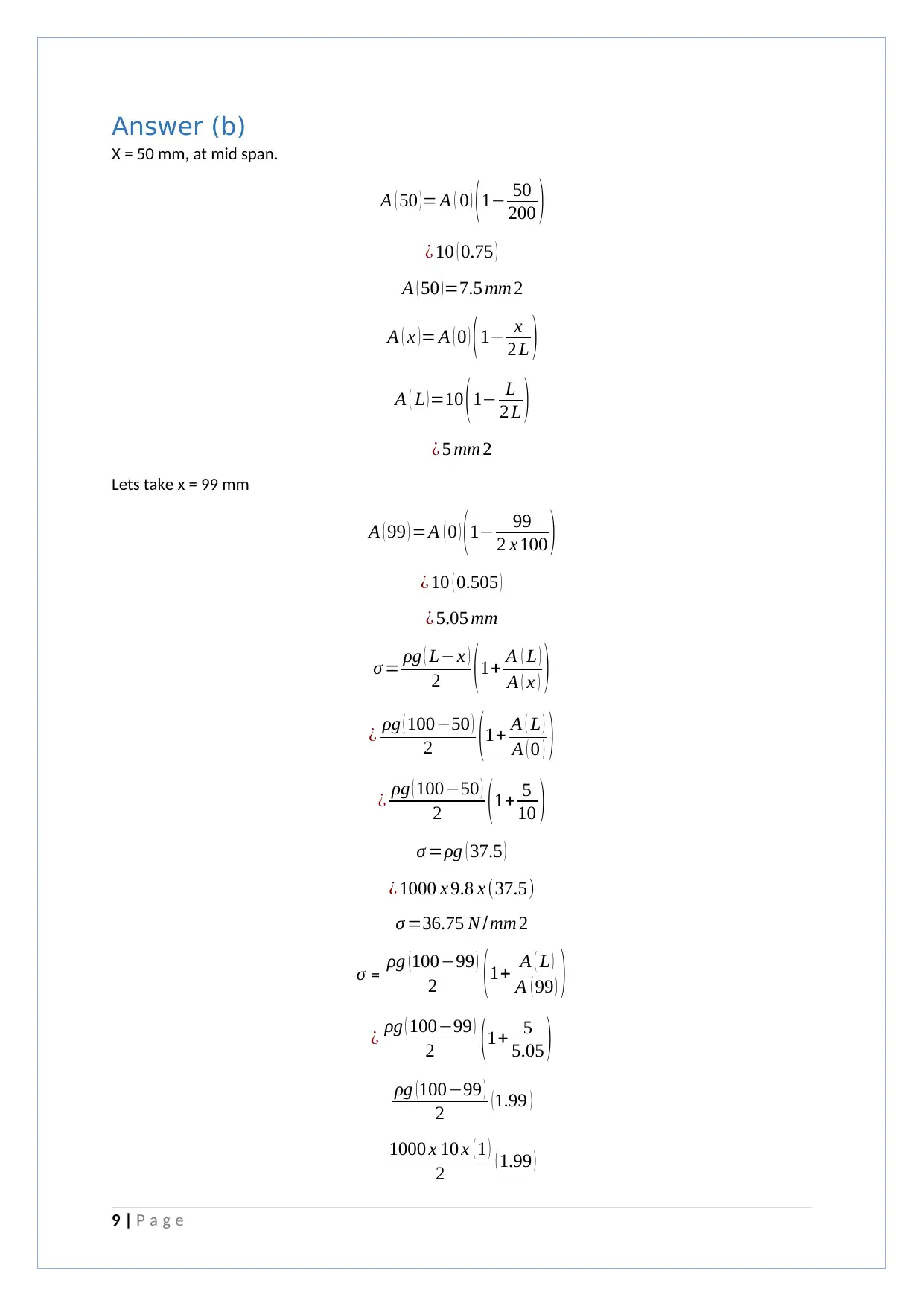
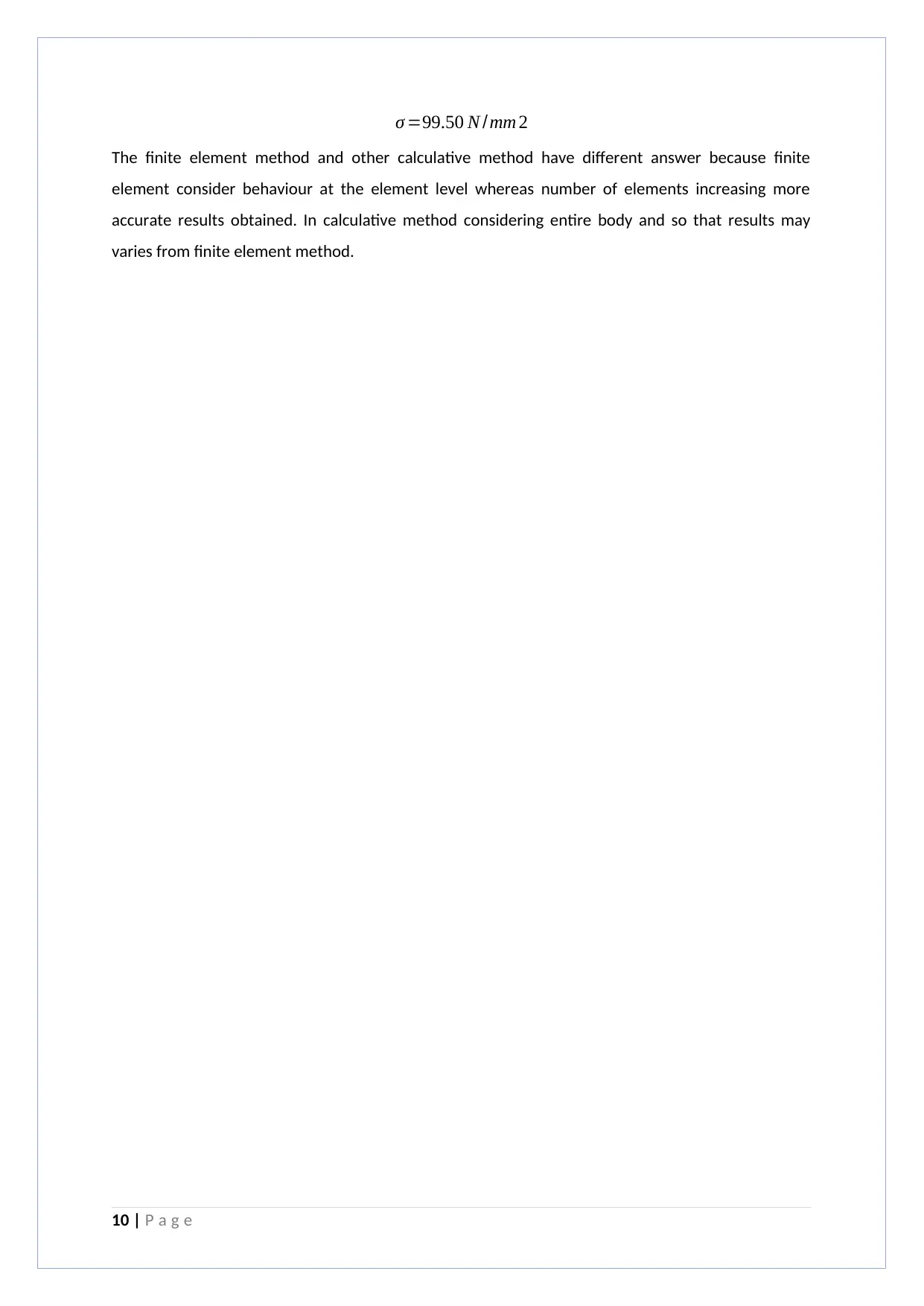






![[object Object]](/_next/static/media/star-bottom.7253800d.svg)